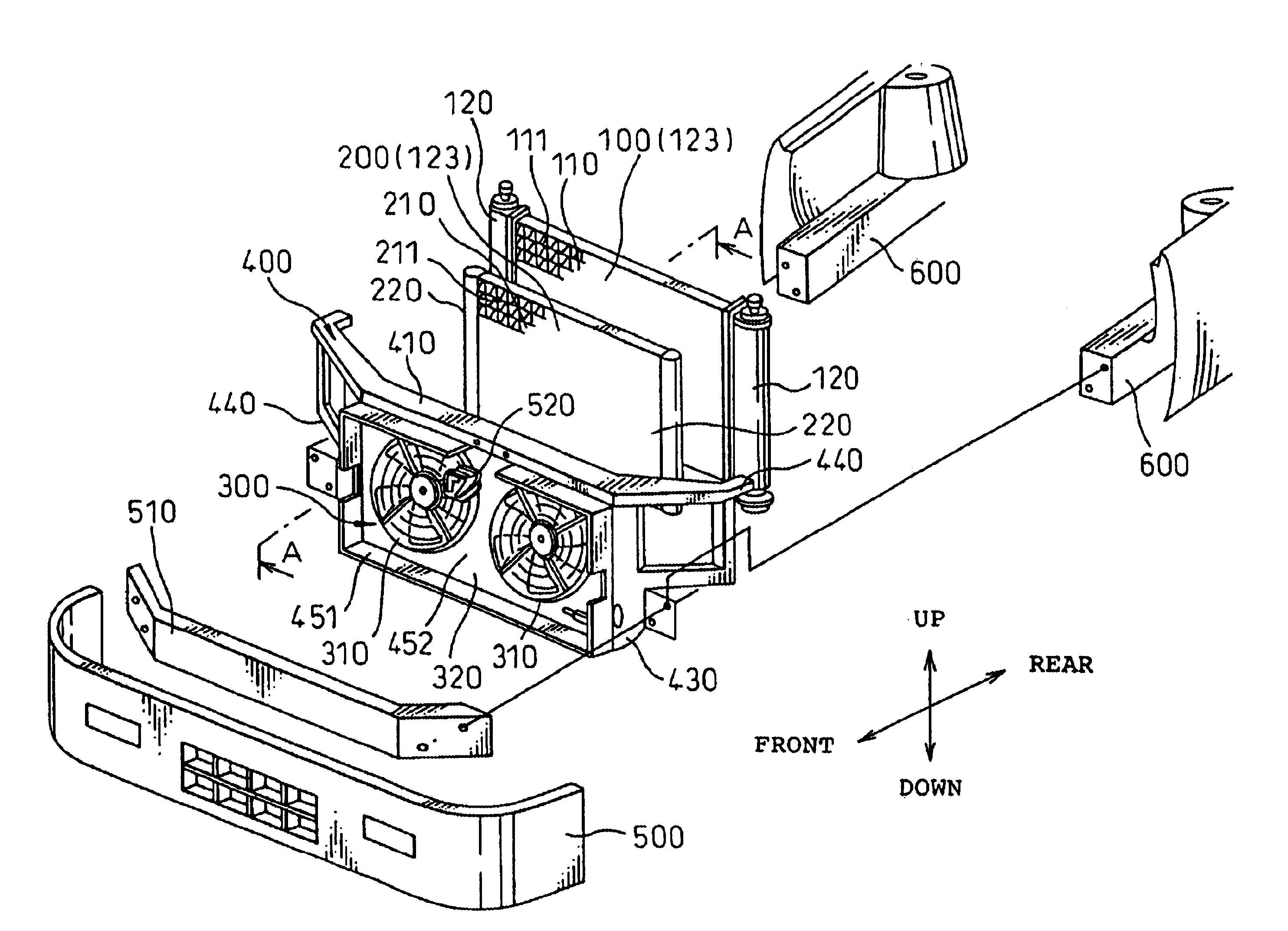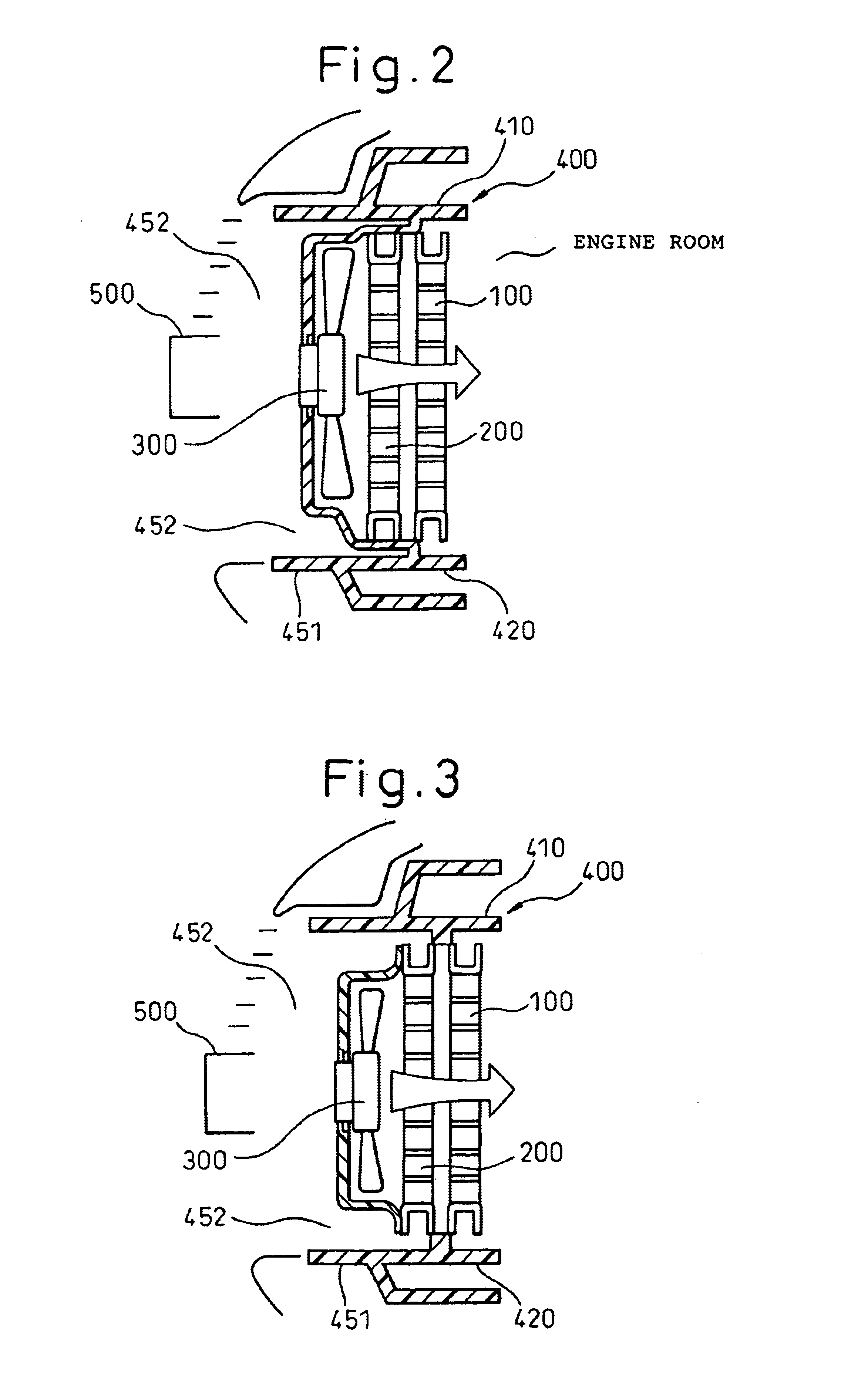Front end structure
- Summary
- Abstract
- Description
- Claims
- Application Information
AI Technical Summary
Benefits of technology
Problems solved by technology
Method used
Image
Examples
first embodiment
(First Embodiment)
[0019]This embodiment represents a case in which a radiator for cooling the cooling water for an engine (internal combustion engine) to drive the vehicle, a condenser for condensing by cooling the refrigerant circulating in the refrigeration cycle (air conditioning system) of the vehicle and a fan unit for blowing the cooling air to the radiator and the condenser make up the vehicle front end parts mounted on the vehicle front end portion. FIG. 1 is an exploded perspective view of a front end structure according to this embodiment.
[0020]In FIG. 1, numeral 100 designates a radiator, numeral 200 a condenser and numeral 300 a fan unit. The fan unit 300, the condenser 200 and the radiator 100 are mounted on the vehicle in that order in series from the upstream side (the vehicle front end side) along the air flow.
[0021]The fan unit 300 includes axial flow fans 310 and a shroud 320 having stays 325 for holding the axial flow fans 310 while at the same time hermetically s...
second embodiment
(Second Embodiment)
[0043]According to this embodiment, unlike in the first embodiment having the panel 400 and the shroud 320 integrated with each other, the panel 400 and the shroud 320 are formed as members independent of each other and the fan unit 300 is fixedly assembled on the condenser 200 and the radiator 100 by fastening means such as a bolt, as shown in FIG. 3.
[0044]This facilitates maintenance work (repair and / or exchange) conducted on the fan unit 300 at a dealer or a service station.
third embodiment
(Third Embodiment)
[0045]According to the first and second embodiments, the condenser 200 and the radiator 100 are fixedly assembled on the panel 400 independently. In the present embodiment, on the other hand, as shown in FIG. 4, the condenser 200 and the radiator 100 are assembled on the panel 400 after being integrated with each other.
[0046]According to this embodiment, the condenser 200 and the radiator 100 are integrated with each other by side plates (brackets) 110 each making up a reinforcing member of the condenser 200 and the radiator 100. At the same time, the side plates (brackets) 110 constitute a duct structure for preventing the air introduced from the grille opening 452 from bypassing the condenser 200 and the radiator 100.
[0047]Each of the side plates 110 is arranged on an end portion of the condenser 200 and the radiator 100, both substantially rectangular, and extends in parallel to the tubes to reinforce the heat exchange core formed of the tubes and the fins.
[0048...
PUM
 Login to View More
Login to View More Abstract
Description
Claims
Application Information
 Login to View More
Login to View More - R&D
- Intellectual Property
- Life Sciences
- Materials
- Tech Scout
- Unparalleled Data Quality
- Higher Quality Content
- 60% Fewer Hallucinations
Browse by: Latest US Patents, China's latest patents, Technical Efficacy Thesaurus, Application Domain, Technology Topic, Popular Technical Reports.
© 2025 PatSnap. All rights reserved.Legal|Privacy policy|Modern Slavery Act Transparency Statement|Sitemap|About US| Contact US: help@patsnap.com



